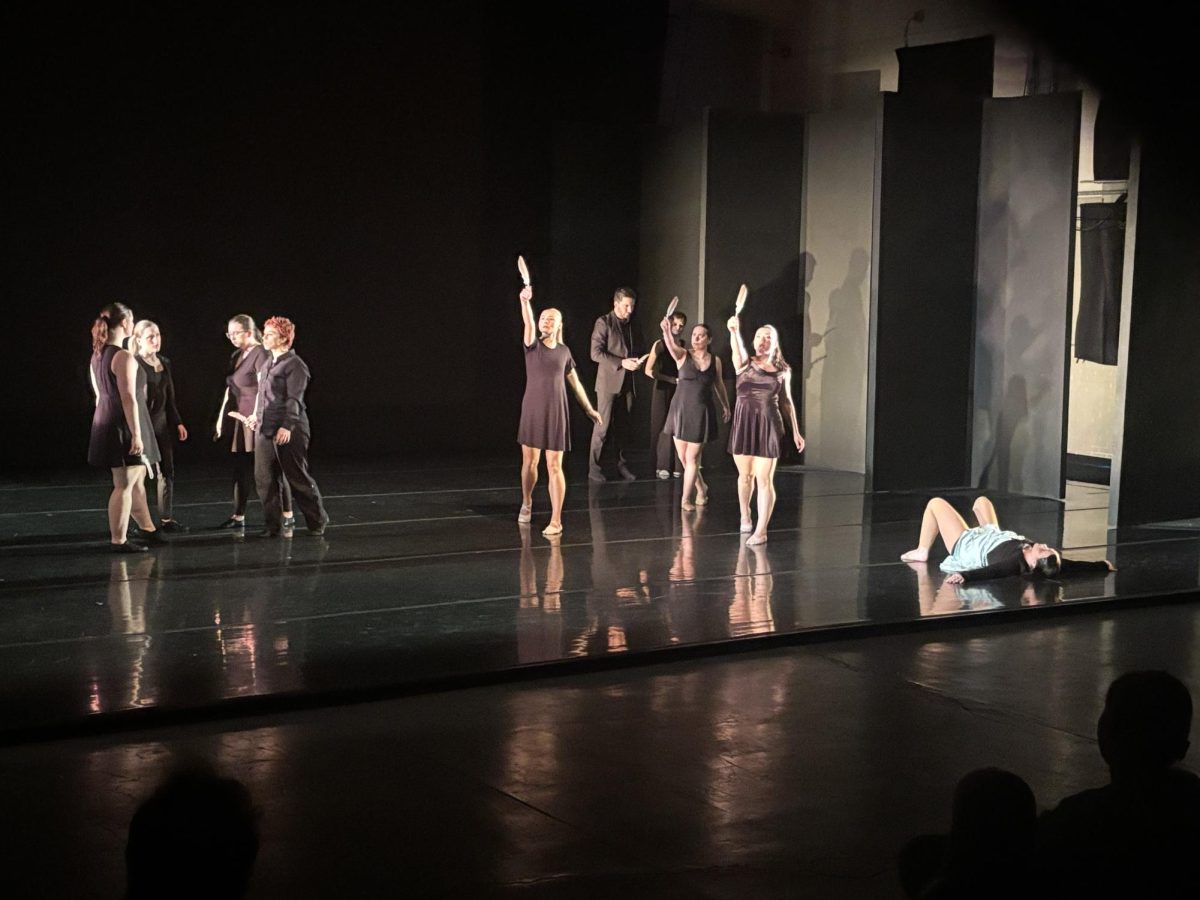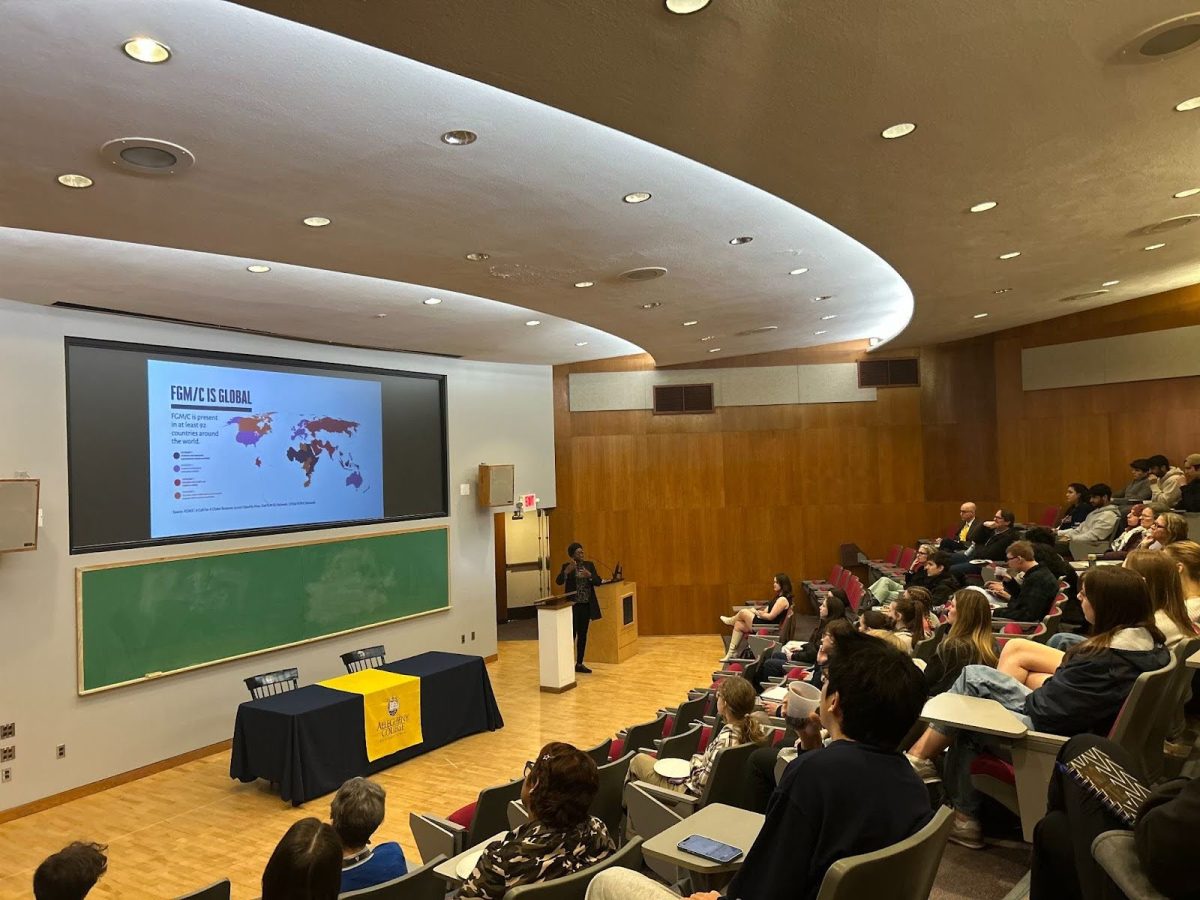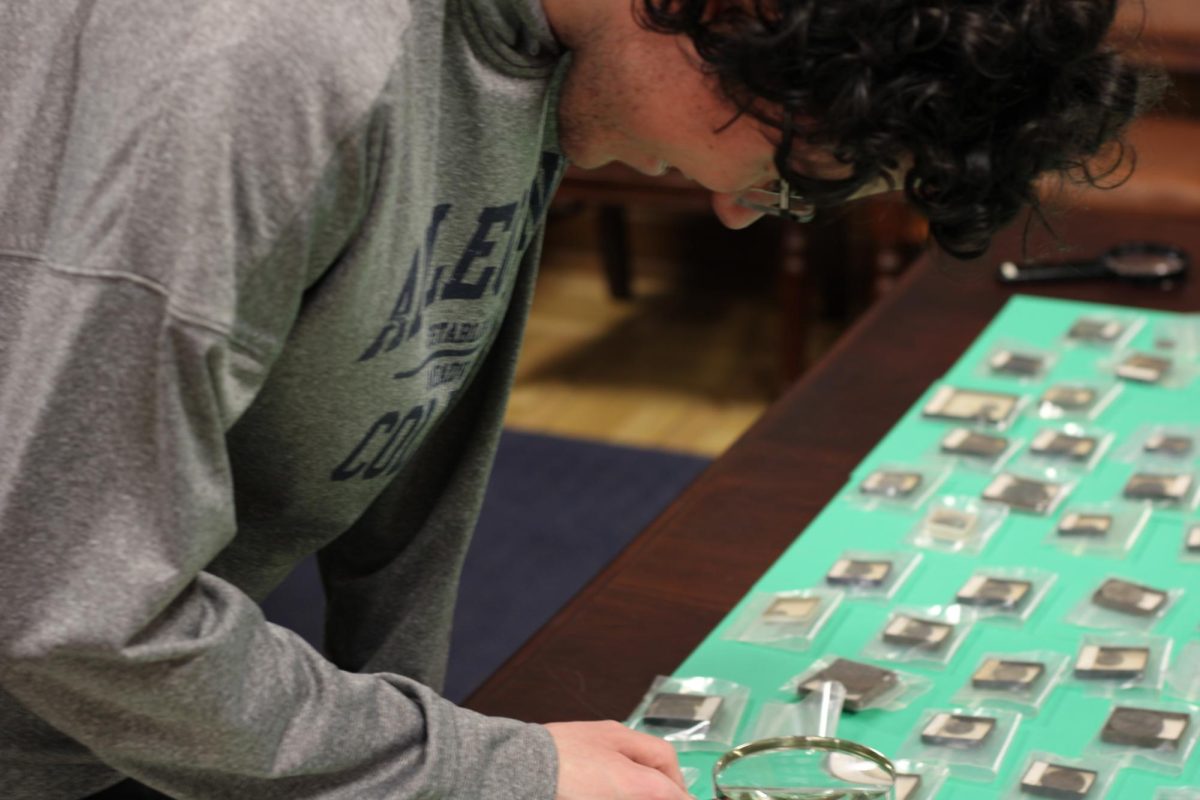Parking on Allegheny College’s campus is always a lively debate from semester to semester. In spring 2025, students have shared popular opinions online about parking rules, regulations, maintenance and much more.
Currently, Allegheny College Public Safety has seven articles under its Parking and Traffic Regulations that detail the rules and laws that Public Safety officers abide by. These rules apply to students who have purchased a parking permit for $200 per year as well as students who have not purchased a permit.
According to Mark Weindorf, director of Public Safety, students who have a parking permit but park in a lot that is not designated by the sticker on their rear window incur a $10 fine.
For students who have not purchased a parking permit, the first ticket will incur a $75 fine and every ticket thereafter will incur a $150 fine. All of the lots on campus are designated by stickers of different colors, with the most notable being gold for faculty and employees, and orange for commuters.
“Parking here is limited. It’s a smaller campus, the parking lots are very limited,” Weindorf said. “The nice thing, though, is that it is a smaller campus, so a lot of the thought is that it is a walking campus. You can really get anywhere here within five or six minutes if you’re walking and do not have an impediment.”
Public Safety officers are on call 24/7, though the more aggressive parking enforcement occurs during the day because the influx of campus traffic occurs between 8 a.m. to 4 p.m. on weekdays. Weindorf explained that Public Safety gets the most parking complaints in the Crawford Hall lot by the David V. Wise Center.
“That is a smaller lot, and there are students who live in Crawford who pay to park there. That lot is commuter parking as well. They come in, and then they can’t find a spot because people are going to the gym,” Weindorf said. “The lower lot, closer to the Wise Center, is a staff lot that fills up pretty quickly. Staff will park in the Crawford lot because of this, which we do not want.”
According to Weindorf, the number of tickets given out by Public Safety officers fluctuates from day to day. This could range anywhere from eight to 20 tickets daily, depending on how people are parking on that given day.
Weindorf stated that the Public Safety officers come to know the students’ vehicles, and if they see a car without a parking pass for the first time, that car will not receive a ticket. Usually, it is assumed that it is a visitor parked in the wrong space, but if the same car has had several violations, then enforcement will begin.
Article V Section 500 under the Public Safety Traffic and Parking Regulations states that a boot is applied after three unpaid parking tickets have been issued. Many students have voiced their dissent both verbally and online.
According to Weindorf, the wheel boots are newer in practice, but not in policy. “It’s been in the policy for years, and I do not believe the policy has changed much,” he said. “We’re a bit more liberal with the policy to where, generally, it’s between six to ten tickets before the officer gets to it (issuing a boot).”
Weindorf stated that Public Safety began using the wheel boots on a regular basis in the Fall 2024 semester. He also wanted to make it known that the Ravine-Narvik parking lot is currently open to all students for parking while the dormitory is closed.
“My big campaign that I’ve always said to my friends is that the Gold lots should be Gold-only during working hours,” said Rion McClusky, ’26. “I think that the best way to do that is to split up the Gold lots so that faculty and employees have different colors, and the faculty lot is only used by faculty from 9 a.m. to 5 p.m.”
McClusky said that this could be a good opportunity for public safety, stating that he believes public safety could make revenue ticketing students who would not follow this “9 to 5” rule. McClusky lives in Shultz Hall this year and has never been ticketed by Public Safety, but he has been ticketed by the city of Meadville because he is forced to park on the street.
“The Schultz parking lot is a total mess; there are no lines, there are no signs and you can never park there. It’s terrible,” McClusky said. “I pay $200 a year to park here, and they don’t use that money for parking.”
Weindorf stated that he will look into the signage issue and the lack of parking space lines as soon as possible. “Right now, it’s tough with all the students here. So some of these issues we’re really hoping to solve over the summer when there are fewer vehicles on campus,” he said.
McClusky also feels like he does not go to more places on campus because of the lack of parking. Walking to the Wise Center or Campus Center at night is something he does not prefer to do, and this makes him less likely to go to these places because he cannot park there.
McClusky feels that there are enough parking spaces on campus for faculty and students, but the way the parking lots are divided up makes it more difficult to find parking as a student. “The faculty isn’t here all the time, we are,” he said.
In the past, McClusky has been forced to park on a side street off of Park Avenue near Steffee Hall on occasion when driving to class. This has made him feel unsafe multiple times trying to cross the 35 MPH street, and made him empathize with the people who live in the homes he parks in front of.
“It feels unfair that I’m parking in front of people’s houses. Those people should get to park there, and I’m a student. I’m sure they don’t like the students parking there,” he said.
While the parking situation may interfere with McClusky’s daily routine at times, it is usually a minor inconvenience. “I work off campus, so I am constantly coming and going from the parking lots. And every time I come back, I can’t find parking, so I’m parking on the street,” he said. “It does in a way that is just irritating, but not in a way that really impacts my day.”
Henry Smith, ’26, lives in Allegheny Commons, the northernmost dorm building on campus, which creates a long commute for him when he has classes.
“I think there should be more accessibility to different lots because if you’re trying to park on campus, you really only have a couple of options: street parking or buy a $200 parking pass for a singular lot,” Smith said. Because he opted out of the parking permit for the year, Smith must use only the designated street parking on both Allegheny and Meadville city streets.
Smith shared strong opinions about the pricing of Allegheny’s parking permits, stating that while $200 may seem steep in the beginning, tickets can rack up quite quickly without a pass. “I thought, ‘What would be the point?’ and I didn’t have $200 I was willing to spend on it then. That resulted in me so far getting $400 worth of tickets just this year,” Smith said.
As mentioned previously, without a permit, the first ticket incurred is $75, and every ticket thereafter is $150. Smith stated that it was worth it to get the parking permit in some sense because a lot of people choose not to and end up paying more.
Smith has only incurred one ticket that he may dispute for parking along East John Street, which is considered a parking lot by Public Safety. According to Smith, there was no marked signage stating that this was an North Village lot, except for a small, square, black and red sticker that reads NV stuck to a lightpost.
Smith feels that the ticketing from Public Safety seems unnecessary, or feels targeted at students who are running into buildings only for a couple of minutes. “The most recent ticket I got was the other day, and I saw a Public Safety officer leaving the Campus Center parking lot. I was only going in for about five seconds to print something, so I went inside,” Smith said. “By the time I came out, he was already back, writing me a ticket.”
An observation made by Smith was a misrepresented moniker used on multiple occasions when he received tickets in the past. “I’ve seen three officers pulling away from my car, and it’s different officers each time, but they’ve all written Officer 6 on the ticket,” Smith said.
Smith feels that this misrepresentation helps the officers to avoid the responsibility of “sniping people who just pop in for a second.”
Weindorf stated that all Public Safety officers have their own badge numbers that they use when issuing tickets. “That would have been the same officer; they just didn’t recognize them as the same officer,” Weindorf said. “Our officers are not putting down false badge numbers to make up some phantom officer, or increase numbers for a specific person. Simply mistaken in their identity.”
Overall, Smith believes that the solution to this problem is to redesignate the already existing lots rather than try to build more spaces. He has seen that multiple lots are empty at least 75% of the time, specifically like the old Caflisch parking lot and the Wise/Edwards parking lot.
Even if a student does have a parking pass, they would be ticketed by Public Safety for parking in any of the aforementioned lots if it is not the lot they are registered for. “My suggestion would be to open up a parking pass that is generalized for a couple of different parking lots that are less utilized, like destination points where you could park for a little bit,” Smith said. “Or maybe have designated parking spaces in different parking lots that are 30-minute parking for people in the Campus Center trying to print.”
Students have voiced their opinions about the lack of maintenance done on the parking lots on Allegheny College’s campus. Hailey Herring, ’26, explained that one of her main concerns is with the North Village 1 and North Village 2 parking lots.
“NV 1 and 2 have rock parking lots that need to be refilled, need to be evened out, and/or paved because it’s bad for our cars,” Herring said. She paid for a parking permit this year, and even with the pass feels that she sometimes does not have access to parking.
Weindorf completely agreed that the NV 1 and 2 parking lots are an issue, and something that Public Safety is working towards fixing.
“We intend to discuss this with Physical Plant because it’s not necessarily Public Safety’s primary responsibility, but that doesn’t mean that it’s not something we can take notice of and ask the proper resources to do something about it,” Weindorf said. “If we find something unsafe, whether that’s a sidewalk, anything that’s broken, we do a work order directly from here to Physical Plant.”
Herring stated that she believes that the current parking on campus feels very restricted. “Especially for those who live in Brooks or Walker, it’s really hard for them to find parking spots without getting a ticket,” Herring said. “I feel like that’s a little unfair because we have all these parking spots on campus, and half of them you can’t use.”
Herring provided alternative solution to the parking dilemma.
“In my opinion, there should be a set time that Campus Security checks all the parking lots, and I think that if you’re in the wrong parking lot at that time, then you should be ticketed for it,” Herring said. “But I also believe that if someone is — if it’s like a five-minute trip into Pine Market — sometimes I feel like that can be a little bit circumstantial, which is why they give us the option to dispute the tickets, if needed.”
Herring feels that having the parking lots in a specific order based on buildings will keep the campus body organized. “I feel like for what they (Public Safety) have — the resources they have, and the options they have — they’re doing what they can, but there are things we can change.”
Many students gave suggestions on how to improve parking in the coming school year, ranging from splitting up the faculty and employee lots, creating set times when students can be ticketed, and the creation of a new parking permit for specific parking spots in different lots at a discounted rate.
While it is clear that parking is a lively topic with the Allegheny College parking, it is essential to note that there are changes on the way. The issues surrounding the NV1, NV2, and Shultz lots are being looked into this semester and hoping to be solved over the summer of 2025.






